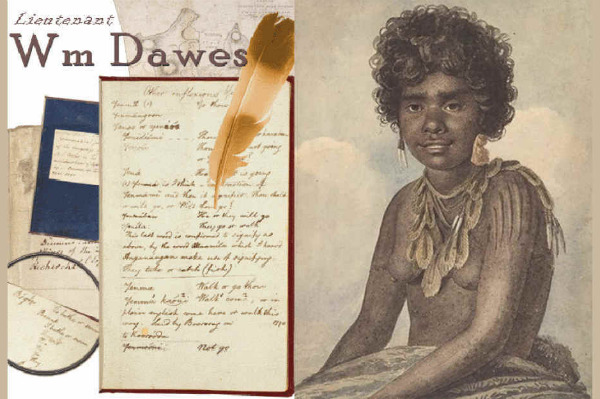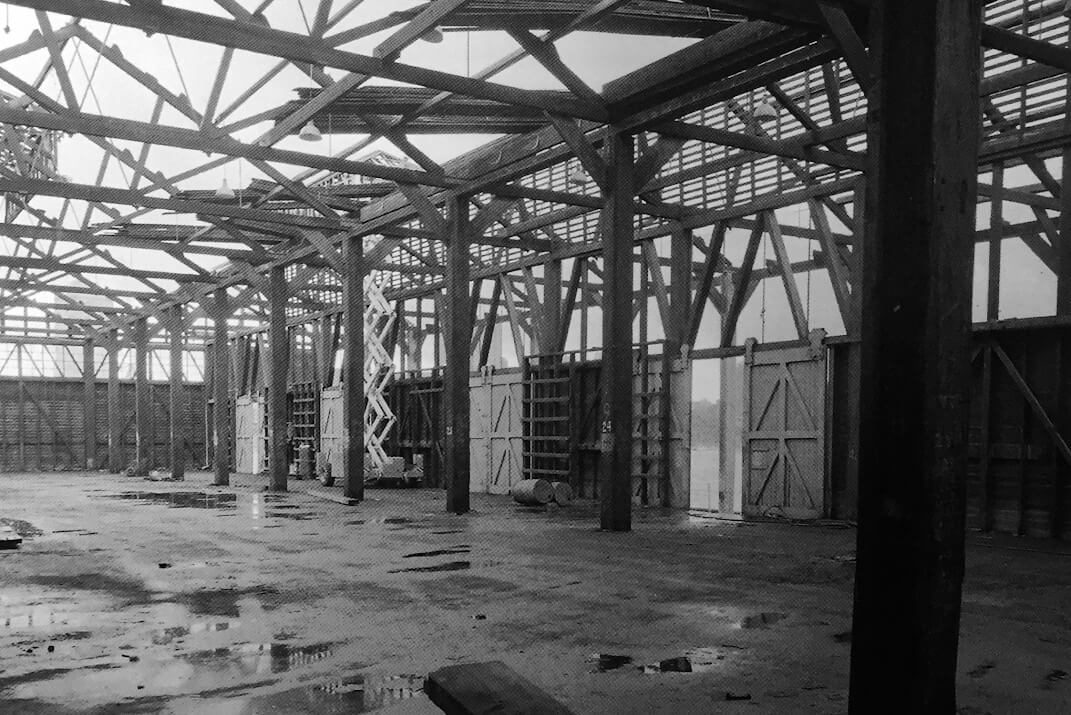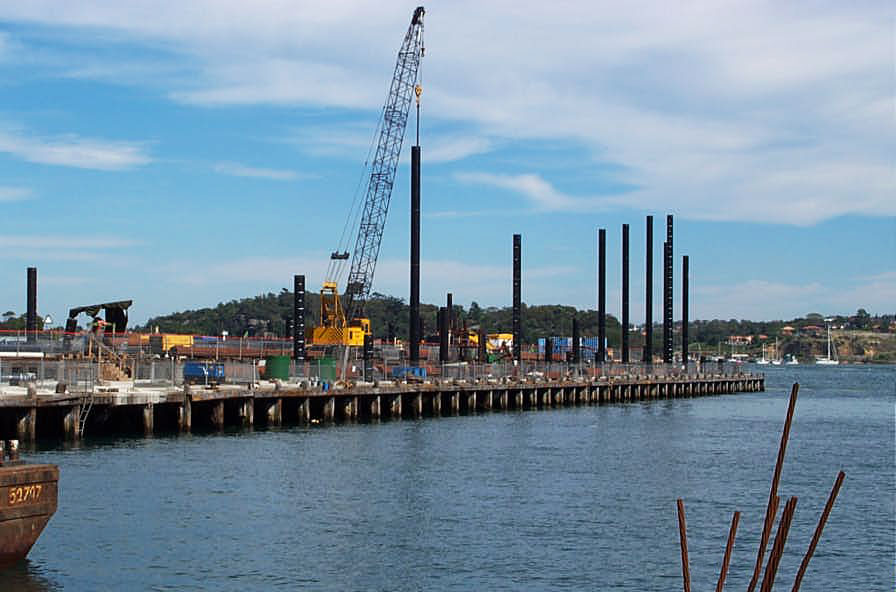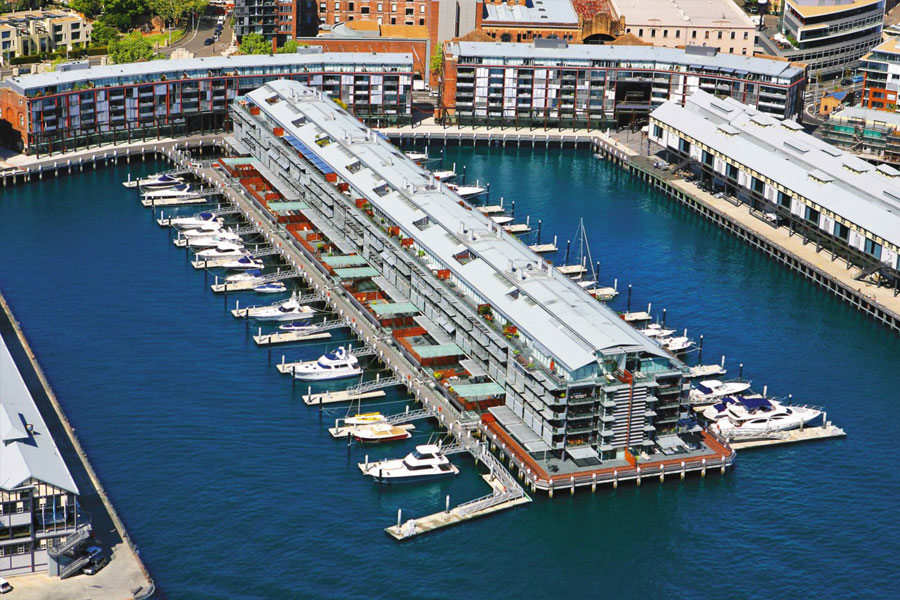The Evolution of an Icon
THE PIER THROUGH HISTORY
Restoration of heritage structures around Walsh Bay started in the 1990s, and continues to this day with the slated rejuvenation of Pier 2/3 and Wharf 4/5 as part of the Walsh Bay Arts and Cultural Precinct project. Amongst such works, The Pier on Walsh Bay (Pier 6/7) is notable as the only completely new construction, albeit one that is in harmony with its heritage surrounds.
An AMBITIOUS undertaking
Construction of The Pier first entailed the building and then sinking of a 13,000 sqm, 500-space, underwater concrete carpark. This video provides a brief overview of local history and showcases the immense engineering effort required to deliver this world-first feat.
Tar-ra and Tullagalla
Prior to European settlement, the area now known as Dawes Point – the suburb in which Walsh Bay is located – was referred to by the local Gadigal people as ‘Tar-ra‘ and ‘Tullagalla‘. It was in this place that the first dictionary of the local indigenous language was compiled, a collaboration between Lieutenant William Dawes of the First Fleet and a young Aboriginal woman by the name of Patyegarang.
With its proximity to the then-teeming waters of the harbour, Dawes Point and Walsh Bay were favourite fishing and cooking spots for Aboriginal communities. Their presence was marked by a series of rock carvings which lined the foreshore areas, unfortunately now lost to erosion and subsequent development.
Image via Patji-Dawes Award – Centre of Excellence for the Dynamics of Language.
A woman of NSW by Augustus Earle 1793-1838, courtesy of National Library of Australia. PIC Solander Box A33 #T73 NK12/35


EARLY EUROPEAN SETTLEMENT
Named after Lieutenant William Dawes, Dawes Point became the site of Australia’s first mounted guns – now resting in the shadow of the Sydney Harbour Bridge – and Australia’s first European cemetery. By the mid-1800s, the area had turned into a thriving maritime community which brought together a cross-section of rich and poor working alongside each other as traders and wharfies, owners and storemen, residents and those departing and arriving on the multitude of ships that docked at the piers.
The Wool Trade
Whilst the Dawes Point area had begun to decline as a residential area in the late 1800s, the commercial side of Walsh Bay again surged with the growth of the wool trade. For nearly half a century, the piers of Walsh Bay acted as a loading port for wool ships bound for the old world. Today, the wool bale elevators and jib cranes remain as part of the rejuvenated piers, testimonies to the thriving trading port of a bygone era.


The forgotten years
From the mid-1920s onwards – perhaps as the depression hit – the trading activity at Walsh Bay entered an era of steady decline. Whilst it was briefly used as a departure port for WW2 soldiers, it saw less and less activity until the 1970s; by this time, the advent of containerised shipping meant that the loading facilities were no longer adequate nor the piers of sufficient scale to support the larger trading ships. The activity moved elsewhere, and the once-thriving piers fell mostly silent – left to languish as mere spectators to the world of modern shipping that continued to sail by en route to other destinations around the harbour.
A brighter future
Beginning in the 1990s with the refurbishment of Pier 1 as a five-star hotel, Walsh Bay was delivered a new lease on life when private developer Walsh Bay Finance (a joint venture between Mirvac and Transfield) was given approval to commence a major urban renewal project. It was to be the largest such project in the southern hemisphere – with Pier 6/7 taking centre stage.


The Pier Today
Construction works for the 140-apartment, low-rise structure on the site of the derelict Piers 6/7 were completed in 2003. Since then, The Pier has become home to a vibrant community of residents who enjoy the benefits of a spectacular over-water location in close proximity to the CBD – yet away from the hustle and bustle of Sydney’s main streets.
The surrounding Walsh Bay waterfront is a popular restaurant and cafe area, and the precinct continues to grow as a destination for arts and culture. With various icons such as the Sydney Theatre Company, the Sydney Dance Company, and the Roslyn Packer Theatre all finding their home along Hickson Road, the area’s cultural prominence is being enhanced by major rejuvenation work centred on Piers 2/3 and Wharves 4/5. [Note the difference between a pier (a structure separated from the road) and a wharf (a structure connected to the road).] The opening of the Barrangaroo business precinct and headland park, just a short walk from the centre of Walsh Bay, offers world-class dining, shopping, and entertainment options.
Pier 6-7 was named to The Pier on Walsh Bay in 2018.
